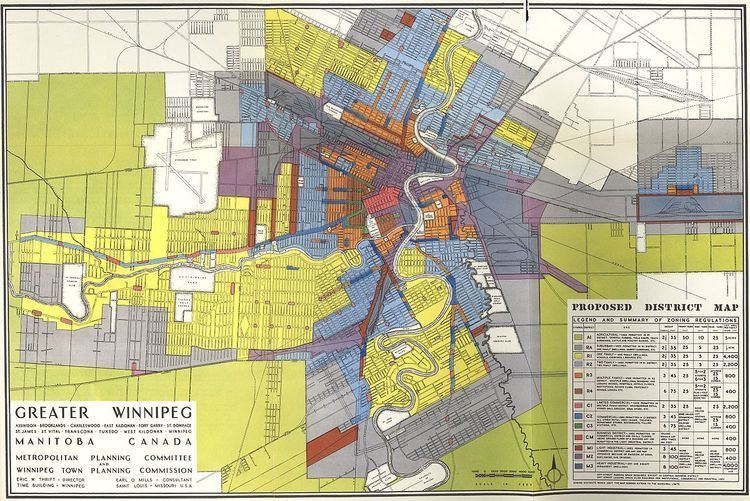 | ||
Single-use zoning, also known as Euclidean zoning, is a tool of urban planning that controls land uses in a city. The earliest forms of single-use zoning were practiced in New York city in the early 1900s, to guide its rapid population growth from immigration. Land uses were divided into residential, commercial and industrial areas, now referred to as zones or zoning districts in cities. Single-use zoning became known as Euclidean zoning because of a court case in Euclid, Ohio, which established its constitutionality, Village of Euclid, Ohio v. Ambler Realty Co. 272 U.S. 365 (1926).
Euclidean zoning has been the dominant system of zoning in much of North America since its first implementation. The predictable model for dividing land use patterns generated by the Euclidean system have been charged by many commentators as playing a direct role in a number of problems in land use planning evident in the United States and elsewhere. Single-use zoning is a basic model that has not evolved to create appropriate solutions for the increasing complexity of social, political and environmental challenges in cities.
Problems affiliated with Euclidean-style zoning policy include urban sprawl, urban decay, environmental pollution, racial and socioeconomic segregation, negative economic impacts and an overall reduced quality of life. Land use regulations associated with a high separation of land uses have also been criticized as being fraught with legal obstacles to rehabilitating neighbourhoods affected by the aforementioned problems (such efforts are often referred to as urban rehabilitation or urban renewal).
Euclidean zoning represents a functionalist way of thinking that uses mechanistic principles to conceive of the city as a fixed machine. This conception is in opposition to the view of the city as a continually evolving organism or living system, as first espoused by the German urbanist Hans Reichow.
Criticisms
Planning and community activist Jane Jacobs wrote extensively on the connections between Euclidean zoning and the destruction and displacement of communities in New York City. Her work details how conventional zoning often leads to the decay of municipal infrastructure and social capital and perpetuates brutal cycles of poverty and chronic under-funding in certain neighbourhoods. Jacob's writings, along with increasing public dissatisfaction with the attendant problems of urban sprawl, is often credited with inspiring the New Urbanism movement and the ensuing body of literature concerned with solutions to uneven city development.
Critics argue that putting everyday uses out of walking distance of each other leads to an increase in traffic since people have to get in their cars and drive to meet their needs throughout the day. Single-zoning and urban sprawl have also been criticized as making work–family balance more difficult to achieve, as greater distances need to be covered in order to integrate the different life domains.
